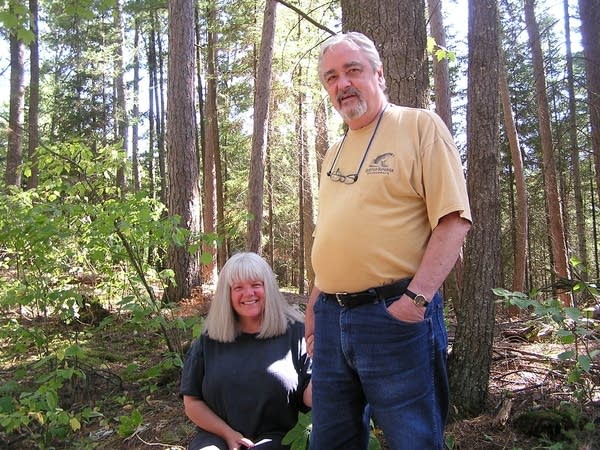Forest managers want 'prescribed' fires to prevent wild ones
Go Deeper.
Create an account or log in to save stories.
Like this?
Thanks for liking this story! We have added it to a list of your favorite stories.

In an effort to prevent the kind of catastrophic fires burning across the western United States, northern Minnesota forest managers are laying the groundwork for a "prescribed" fire near Ely.
They worry about places such as the Echo Trail, which winds through thick pine north of Ely, past YMCA camps and cabins on the shore of the North Arm of Burntside Lake.
"There could be up to 200 kids at those camps on a hot summer day," said Timo Rova, fire management officer for the western Superior National Forest.
Rova grew up in Ely and returned home last year after 12 years working in Montana as a "smoke jumper," parachuting out of planes to battle remote blazes.
Turn Up Your Support
MPR News helps you turn down the noise and build shared understanding. Turn up your support for this public resource and keep trusted journalism accessible to all.

Balsam fir is Rova's enemy number one in northern Minnesota. It's native to the region. But it's proliferated over the past century as the Forest Service has rapidly extinguished nearly every wildfire that sparks up. That's allowed balsam fir, a highly flammable, shade tolerant tree, to grow unnaturally thick underneath the canopy of white and red pines.
On a tour of the forest near Echo Trail, fuels specialist Travis Durkin called balsam firs "ladder fuels."
"Here's a balsam fir that's just growing up right now, that will burn, get in these branches of this next smaller one, that will torch out, it will get into the next braches, and next branches, and up into the crowns of the overstory trees," he said.
When a fire climbs into the crowns, it not only destroys the old trees, but can spread rapidly, jumping between treetops.
So, to try to prevent that, the Forest Service has recommended treating 1,452 acres of forest here with a prescribed, or controlled fire. The agency has used the tool since the 1970s, including several burns after the 1999 "Blowdown" killed millions of trees in the Boundary Waters. Firefighters construct lines around the area to be burned, wait until conditions are optimal, and burn in from the edges. Trucks and planes are on hand in case the fire needs to be put out.

Several homeowners, however, question whether the risk of a controlled burn is worth it. To homeowners like Jerry and Claire Taylor, who live at the end of North Arm Road, the risk of the controlled fire becoming uncontrolled is too great.
"We're on a dead end road, there's only one way in and one way out, and if the fire jumps the road here, you're not getting out," said Jerry Taylor.
The Taylors support the Forest Service's goal of removing balsam fir. In fact, their driveway is lined with stacks of balsam cut with the help of a $350,000 government grant to thin trees from private property. Claire Taylor says she wants to cut more balsam down, rather than burn it.
"Since they have allowed the balsam for 100 years to grow into the canopy, and overtake a lot of the forest, then they need to come in and mechanically get rid the balsam, then in a couple of years, start your ground fires," she said.
Jerry Taylor points to the Pagami Creek Fire two years ago as a reason not to thin through burning. That wasn't a prescribed fire, but the Forest Service did allow it to burn for several weeks, managing it for resource benefits. Then gusty winds blew it out of control, burning nearly 100,000 acres.
The risk of that happening with a prescribed fire is low, said Superior National Forest District Ranger Scott Snelson. The strategy has been 99 percent effective since the 1970s, he said.
"We know the outcome of no prescribed fire. And that's increased fire frequency, and increased fire intensity."

But that's a difficult sell for homeowners like Lynne Hill, who lives right at the edge of the the planned prescribed fire. "I'm very concerned, if that burns, and a wind gust comes up, then we've got a crown fire coming all through here."
Hill and others concerned with the proposal have until the end of September to appeal the Forest Service's decision. And even if it gets final approval, there won't be any prescribed burns anytime soon. The U.S. Forest Service has put them on hold, as more and more firefighters are sent from Minnesota and elsewhere to battle the furious fires burning in the West.





